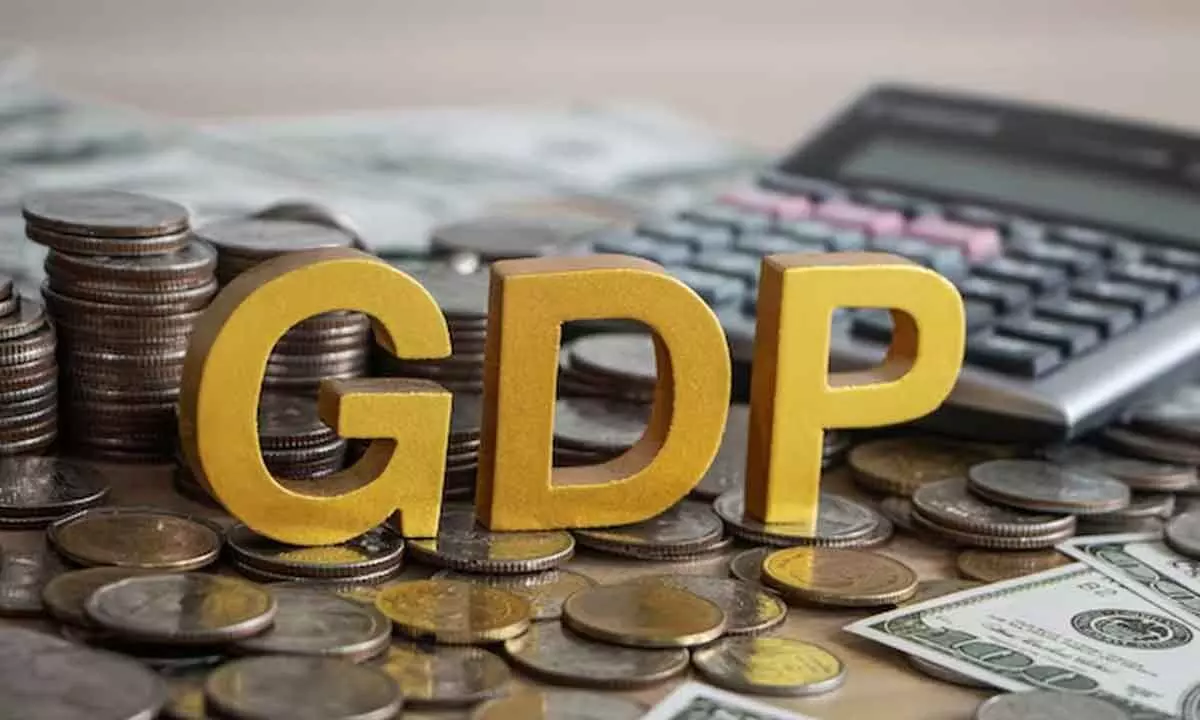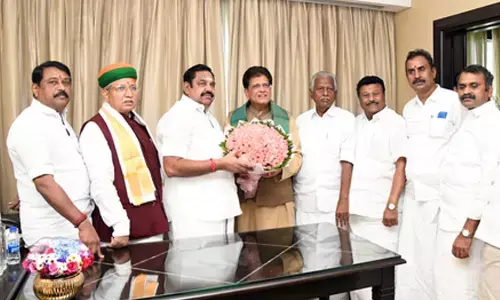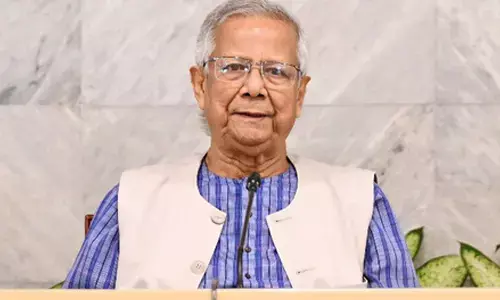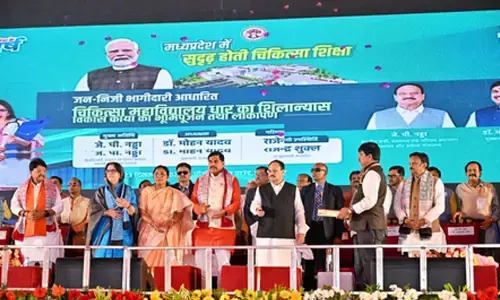India needs to shift the taxation focus from 'Rates' to 'Revenues' to become a developed economy with a USD 25 trillion GDP by 2047, say experts at Think Change Forum roundtable on Accelerating India’s Growth

- India can reduce taxes, maintain a low tax to GDP ratio and still collect robust taxes because of its large population
- Informal economy needs to become part of the tax net to enable the transition from being a large economy to a developed economy
- 5 Key Bold Reforms needed to support the shift from rates to revenue
Think Change Forum (TCF), an independent think tank dedicated to generating new ideas and finding solutions for navigating through a new changing world organised a panel discussion on “A Progressive Taxation Ideology to Accelerate India’s Path to Becoming a Developed Country” at the India Habitat Centre, New Delhi. Experts in the event stressed on the need for a shift in the taxation mindset from Rates to Revenue for India to become a developed economy with a USD 25 trillion GDP by 2047.
The speakers and the panellists focused on the fact that because of its huge population, India can maintain a low tax to GDP ratio and still collect robust taxes to make the transition from being a large economy to a truly developed one. Another key element is the inclusion of the informal economy in the tax net, which as per Think Change Forum estimates lies in the range of 30 percent to 35 percent. The emphasis on the need for a new taxation ideology during the discussion to make the transition from rates to revenue focused on lowering tax rates, enlarging the tax paying base and thereby creating the means for financing of India’s investment and development needs.
The event featured an address on Growth Enablers for the Indian Economy by Sudhir Kapadia, Sr. Partner, EY India. Kaushik Dutta, Co-Founding Director, Thought Arbitrage Research Institute gave a perspective on Indirect Taxes. These addresses were followed by the panel discussion which had the following eminent panellists: Prof. Manoj Pant, Ex Director, Indian Institute of Foreign Trade & Expert in International Trade; Rajat Mohan, Executive Director – GST, MOORE Singhi; Dr. Pulin B Nayak, Centre for Development Economics, Delhi School of Economics and Yogendra Kapoor, Chartered Accountant and a renowned economy, business & tax commentator.
In his address, Sudhir Kapadia, Sr. Partner, EY India, said, “Conventional higher tax rates haven’t resulted in significant tax buoyancy. Recognising this fact, governments in India since 1991 onwards have clearly batted for moderate tax rates leading to greater levels of transparency and compliance. Going forward, it needs to be seen how much fiscal space governments will have to further lower tax rates from current levels. This is especially so as demands on government spending especially in physical and social infrastructure continues unabated to enable meeting high economic growth targets. This is the delicate balancing act which governments will have to grapple with. Time has come to bite the bullet for reforms in direct taxes. There could be one simplified rate structure for businesses and for individuals, there could be one simple three rate structure with low / moderate rates, no surcharges and cesses and no significant deductions.”
“On GST, a lot has been spoken about the rates and clearly it is time to have a far lower number of rates in GST structure. It is also time to ensure we do not have constraints related to availing of input tax credits. There has been a steady increase in income tax revenues but we need to have continued focus on taxpayer experience with tax administration, and ensure the filing process remains seamless and hassle-free,” Sudhir Kapadia added.
The discussion in the event made a case for a wider tax base leading to more revenue collections. Under GST, taxpayers increased from 60 lakh in 2017 to 1.40 crore in 2023 with over 114 crore returns reported to be filed till June 2023. This depicts that a wider tax base leads to more collection.
The event suggested 5 bold reforms to accelerate India’s financial position and strengthen its ability which will act as a force multiplier to the new taxation ideology of reducing taxes and enhancing the base. These reforms will leverage the country’s economic resources toward development without reliance on high taxes, external investments or borrowings:
Pro-growth and investment policies for higher income and consumption – Implementing pro-growth and investment policies aimed at fostering higher income and consumption levels is critical for sustainable economic development. Such policies involve initiatives to stimulate investment, encourage entrepreneurship and promote innovation across various sectors of the economy.
GST reforms to broaden base, remove cascading impact of taxes - Streamlining the law and reduction of slabs to simplify compliance is a crucial step towards achieving the objective of higher tax revenue. By simplifying GST regulations, businesses can navigate the tax system more effectively, reducing administrative burdens and promoting compliance
Unlock amounts stuck in tax disputes, simplify law and compliances - Unclogging the cases pending at the CIT(Appeals) level is important, given that over 5 lakh cases, amounting to INR 14.2 trillion as of March 31, 2022, remain unresolved. Simplifying laws and compliance processes can expedite the resolution of these disputes, facilitating the release of blocked funds and fostering a more efficient and equitable tax system.
Low tax rates with minimal deductions - This involves establishing a flat, low corporate tax rate devoid of surcharges and cesses. Additionally, simplifying the tax slab structure by eliminating deductions ensures transparency and ease of compliance. Such measures not only promote tax efficiency but also provide businesses with greater clarity and certainty regarding their tax liabilities.
Tech-enabled and smart tax administration for effective enforcement - Improving taxpayer services, particularly in interfacing with the Centralised Processing Centre, is imperative. Also, leveraging digitization to encourage voluntary compliance and prompt tax payment, while enabling robust data intelligence and analysis, is essential. By harnessing technology in these ways, tax authorities can streamline processes, enhance transparency, and strengthen enforcement mechanisms.
In his address on Indirect Taxes, Kaushik Dutta, Co-Founding Director, Thought Arbitrage Research Institute, said, “Though GST has brought significant improvements in our taxation system, in penetration, total collection, buoyancy, reduction of time in movement through e way bills, high use of technology etc. but several issues persist to make it a truly world class tax mechanism including multiple rates and operational challenges like businesses needing to register across states, posing logistical hurdles. Illicit markets further exacerbate these challenges by causing substantial revenue losses for the government due to unreported transactions and tax evasion. This not only distorts market prices, but also harms compliant businesses.”
“Tax to GDP ratio cannot significantly go up and that needs a big ideological change. India’s tax to GDP ratio suffers from the presence of a thriving informal sector, which still accounts for 30% to 35% of the economy. A simplified GST regime will enable them to join the formal economy, take input tax credits, and become competitive. Tax evasion continues to be a big challenge along with classification issues. The inverted duty structure is also an impediment. Another area that GST has not been able to crack is e-commerce. So, there are challenges and they need to be addressed,” Kaushik Dutta added.
In his Welcome Address, Ranganath Tannir, General Secretary, Think Change Forum said, “Given the emerging position of India in the world order, all stakeholders must work towards one single goal – to make India a developed country by 2047. We need bold decisions and fresh ideas to make this happen, such as reforming our taxation ideology to lower tax rates and increasing the base of taxpayers, without focusing on improving the tax-GDP ratio. Such restructuring will encourage more business activities and individuals to contribute and join the formal economy.”


















